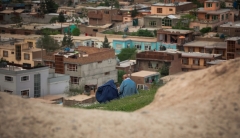MIIS Scientist-in-Residence Part of Team Awarded 2015 Nobel Prize in Physics
Dr. Ferenc Dalnoki-Veress, Middlebury Institute professor and scientist-in-residence at the James Martin Center for Nonproliferation Studies, was a member of the research team whose work was awarded the 2015 Nobel Prize in Physics for a crucial discovery that has changed our understanding of the innermost workings of matter.



